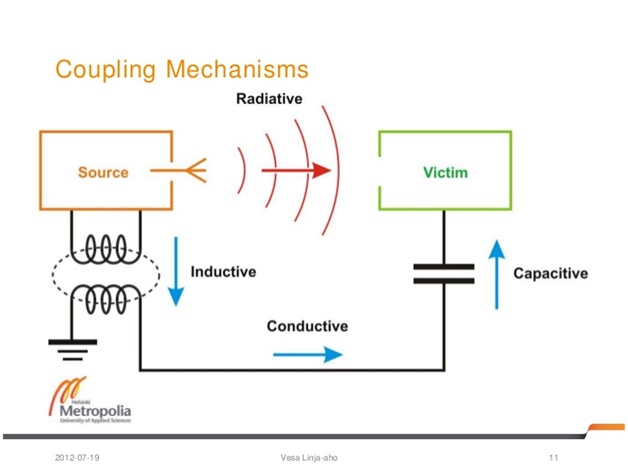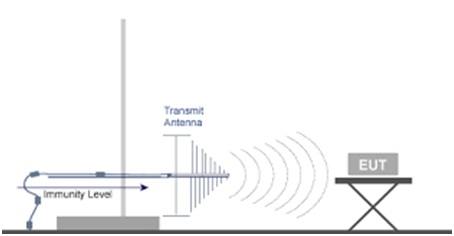What is Electromagnetic Compatibility?
Electromagnetic compatibility (EMC) is the ability of an electronic device or circuit to function in its operating ecosystem without causing any performance degradation as a result of an unintentional electromagnetic interference. EMC testing is a crucial part of a product’s design journey. With EMC certification being a necessary benchmark to pass before your product reaches the market, it is essential to get this element of your design right.
Source: https://www.hermonlabs.com/Services/EMCImmunityTesting%20.html
What is Electromagnetic Compatibility Testing?
EMC Testing helps minimize the possibility that conducted emissions produced by your device will interfere with other electronic products in its precinct. EMC testing is also significant to make sure that your own electronic device will continue to function as expected around other sources of electromagnetic emissions.

Source: https://in.pinterest.com/pin/103231016432268702/
The major objective behind Electromagnetic Compatibility measures is to ensure that a wide range of items of electronic equipment can operate in close proximity without causing any unwanted interference. This interference that affects performance is known as Electronic Interference, EMI. It is this interference that needs to be minimized to ensure that electrical equipment are compatible and can co-operate in the presence of each other. Basically, there are two main elements to EMC:
- Emissions- EMI emission refers to the generation of undue electromagnetic energy. These are required to be minimized below certain acceptable limits to make sure that they do not cause any disruption to any other equipment.
- Susceptibility and Immunity- Susceptibility of an electronic item to EMI is a way it reacts to undue electromagnetic energy. And the aim while designing a circuit is to ensure a sufficiently high level of immunity to such undue signals.

Source: https://www.slideshare.net/linjaaho/emc-automotive
EMC Standards
With increasing exposure, awareness, and need to maintain high standards of electromagnetic compatibility, several standards have been introduced to help manufacturers meet the requisite level they need to comply with electromagnetic compatibility standards.
Long back, the EMC level was quite low and caused often interference, like a taxi going past a house while using a radio telephone was quite likely to disturb the operation of a television in the house, and many other instances. Therefore, it became necessary to introduce EMC standards to ensure the required levels of electromagnetic compatibility are attained.
Why you should test EMC at an early stage?
There are several reasons why EMC testing is left until late in a project. First, is the perceived obstacle of carrying out this testing; though there are specialist labs with well-equipped devices and staff available to help.
Secondly, is the common misconception that power supplies are responsible for EMC issues and that therefore if a power supply has passed its individual tests, the system it gets plugged into will also meet the benchmark. But in reality, it doesn’t work that way as power supplies are often the message-carrier of EMC problems, instead of the cause.
Different Ways of Electromagnetic Compatibility Testing
For conducted emissions testing, you will need an apt spectrum analyzer and line impedance stabilization network (LISN). However for radiated emissions testing, an appropriate spectrum analyzer and antenna will suffice. Radiation emission testing is an electrically quiet space where you can have three meters or more between the EMC antenna and the device you are testing.
So if you prefer, you can also perform your early testing in a well-dedicated and well-equipped testing lab. The cost incurred in these specialized facilities in the early stage of testing is usually very low, especially when you compare it with the cost of last stage redesign work.
The Final Thought
Electromagnetic Compatibility today has become an integral part of any electronic product design. With various standards now enacted and implemented across the world, any new product must meet and have been tested to ensure that it meets the required EMC standards.











